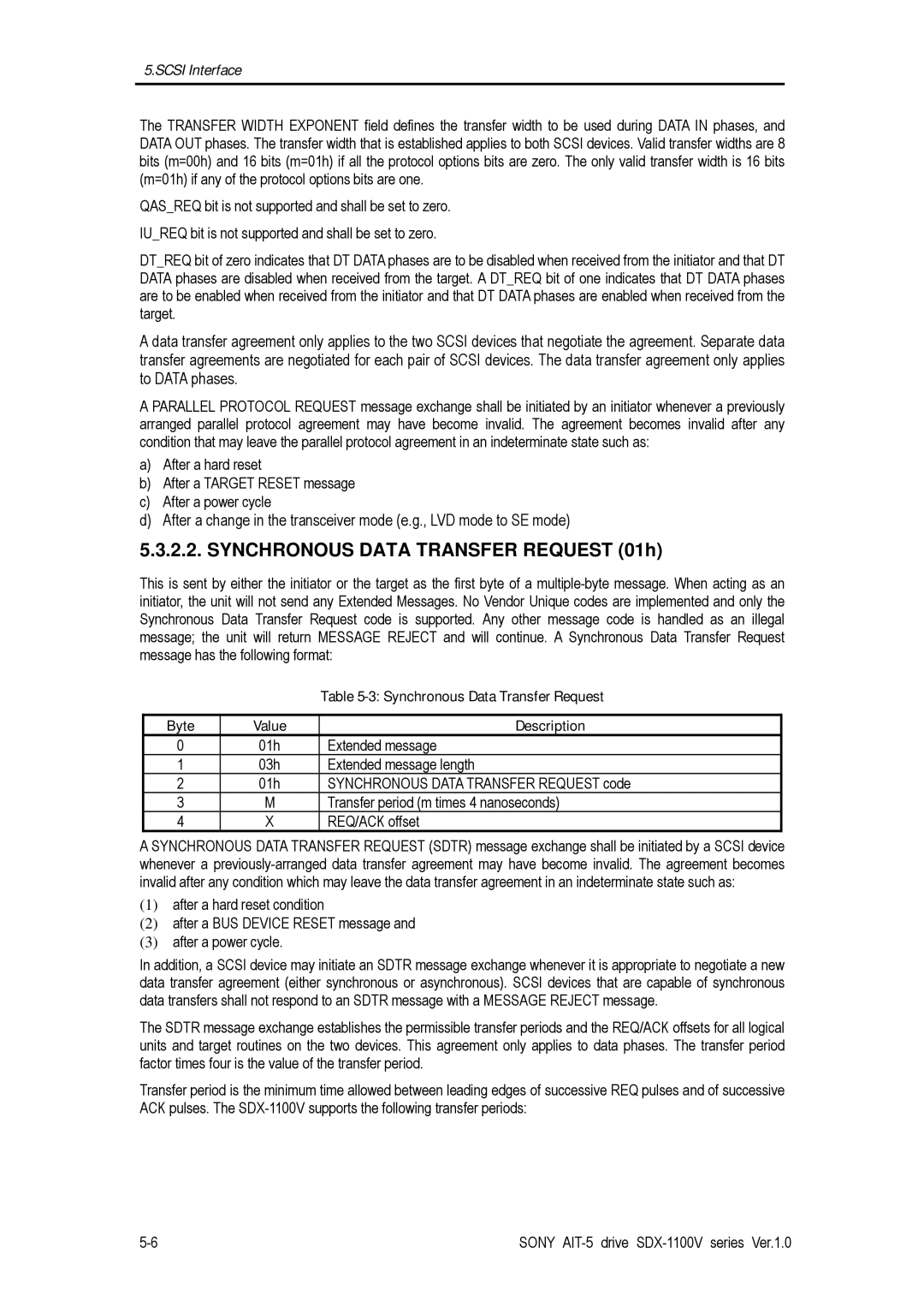5.SCSI Interface
The TRANSFER WIDTH EXPONENT field defines the transfer width to be used during DATA IN phases, and DATA OUT phases. The transfer width that is established applies to both SCSI devices. Valid transfer widths are 8 bits (m=00h) and 16 bits (m=01h) if all the protocol options bits are zero. The only valid transfer width is 16 bits (m=01h) if any of the protocol options bits are one.
QAS_REQ bit is not supported and shall be set to zero. IU_REQ bit is not supported and shall be set to zero.
DT_REQ bit of zero indicates that DT DATA phases are to be disabled when received from the initiator and that DT DATA phases are disabled when received from the target. A DT_REQ bit of one indicates that DT DATA phases are to be enabled when received from the initiator and that DT DATA phases are enabled when received from the target.
A data transfer agreement only applies to the two SCSI devices that negotiate the agreement. Separate data transfer agreements are negotiated for each pair of SCSI devices. The data transfer agreement only applies to DATA phases.
A PARALLEL PROTOCOL REQUEST message exchange shall be initiated by an initiator whenever a previously arranged parallel protocol agreement may have become invalid. The agreement becomes invalid after any condition that may leave the parallel protocol agreement in an indeterminate state such as:
a)After a hard reset
b)After a TARGET RESET message
c)After a power cycle
d)After a change in the transceiver mode (e.g., LVD mode to SE mode)
5.3.2.2. SYNCHRONOUS DATA TRANSFER REQUEST (01h)
This is sent by either the initiator or the target as the first byte of a
|
| Table |
|
|
|
Byte | Value | Description |
0 | 01h | Extended message |
1 | 03h | Extended message length |
2 | 01h | SYNCHRONOUS DATA TRANSFER REQUEST code |
3 | M | Transfer period (m times 4 nanoseconds) |
4 | X | REQ/ACK offset |
A SYNCHRONOUS DATA TRANSFER REQUEST (SDTR) message exchange shall be initiated by a SCSI device whenever a
(1)after a hard reset condition
(2)after a BUS DEVICE RESET message and
(3)after a power cycle.
In addition, a SCSI device may initiate an SDTR message exchange whenever it is appropriate to negotiate a new data transfer agreement (either synchronous or asynchronous). SCSI devices that are capable of synchronous data transfers shall not respond to an SDTR message with a MESSAGE REJECT message.
The SDTR message exchange establishes the permissible transfer periods and the REQ/ACK offsets for all logical units and target routines on the two devices. This agreement only applies to data phases. The transfer period factor times four is the value of the transfer period.
Transfer period is the minimum time allowed between leading edges of successive REQ pulses and of successive ACK pulses. The
SONY |
